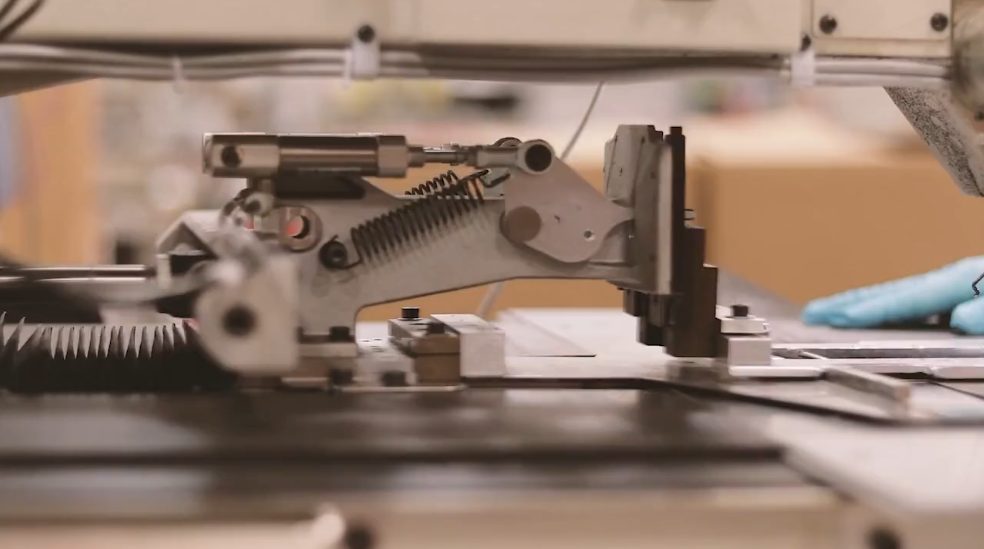Textile manufacturing is a cornerstone of the global economy, producing the fabrics that form the basis of clothing, upholstery, industrial materials, and more. The industry has evolved from handcraft methods to high-tech processes, allowing the production of vast quantities of textiles in diverse forms. Whether you’re a budding entrepreneur, a professional in the textile industry, or simply curious about how fabrics are made, understanding the key techniques and best practices in textile manufacturing is crucial for success.
In this blog post, we’ll take a closer look at the processes that bring textiles to life, and explore the best practices that ensure quality, efficiency, and sustainability in production.
1. Fibers: The Building Blocks of Textiles
Before diving into the manufacturing process itself, it’s essential to understand the raw materials used in textile production: fibers. These are either natural or synthetic substances that are spun into yarns to create fabric.
- Natural Fibers: Derived from plants, animals, or minerals. Common examples include cotton, wool, silk, and linen. Natural fibers are biodegradable and have a rich history in textile manufacturing.
- Synthetic Fibers: Manufactured from chemical processes, synthetic fibers include polyester, nylon, and acrylic. These fibers are often more durable and less expensive than natural fibers, making them popular choices for mass-market textiles.
Understanding the properties of different fibers is the first step in the textile production process. Each fiber type has its unique qualities that influence the final product’s texture, strength, and appearance.
2. Spinning: Turning Fibers into Yarn
The next step in textile manufacturing is spinning, where fibers are transformed into yarns. Spinning can be done by hand, but in most industrial settings, it’s done using machines.
- Ring Spinning: One of the most commonly used spinning methods, this technique twists fibers together to create a continuous strand of yarn. It’s versatile and produces strong, smooth yarns suitable for a wide range of fabrics.
- Open-End Spinning: This method involves feeding loose fibers into a spinning rotor, where they are twisted into yarn. Open-end spinning is faster than ring spinning, but it produces yarns with less uniformity.
- Air-Jet Spinning: This technique uses a high-speed jet of air to twist fibers into yarn. It’s known for its speed and efficiency, but the yarn produced is usually lighter and less durable.
Each spinning technique comes with its own set of advantages and challenges. The choice of spinning method depends on factors like yarn strength, texture, and cost efficiency.
3. Weaving and Knitting: Creating Fabric
Once the yarn is ready, it’s time to transform it into fabric. The two primary methods of fabric production are weaving and knitting, each with its own distinct process.
- Weaving: This is one of the oldest and most common methods of fabric production. It involves interlacing two sets of yarns (warp and weft) on a loom. The warp threads are stretched vertically, while the weft threads are woven across horizontally. The density and pattern of the weave determine the fabric’s final look and feel. Common weaves include plain weave, twill, and satin.
- Knitting: In knitting, yarn is looped together to create a fabric. Unlike weaving, knitting produces fabric with stretchability and elasticity, which makes it ideal for clothing like sweaters, T-shirts, and sportswear. There are two main types of knitting: weft knitting, where the yarn runs horizontally, and warp knitting, where the yarn runs vertically.
Both weaving and knitting offer unique advantages, depending on the end-use of the textile. Weaving is typically used for sturdy fabrics like denim and canvas, while knitting is favored for soft, flexible fabrics used in apparel.
4. Dyeing and Finishing: Adding Color and Texture
Once the fabric is woven or knitted, it undergoes dyeing and finishing processes to enhance its appearance, texture, and durability.
- Dyeing: This involves applying color to the fabric through a variety of methods, including piece dyeing (dyeing the entire fabric), yarn dyeing (dyeing the yarn before it’s woven), and garment dyeing (dyeing the finished product). Dyeing techniques can use natural or synthetic dyes, with modern methods focused on water efficiency and reduced environmental impact.
- Finishing: This includes a wide range of treatments designed to improve the fabric’s properties. Examples include softening, which makes the fabric more comfortable to wear, waterproofing, and flame-retardant treatments. Printing is also a finishing process that adds designs or patterns to the fabric’s surface.
Best practices in dyeing and finishing include using environmentally-friendly chemicals, minimizing water usage, and adopting energy-efficient machinery to reduce the environmental impact of textile production.
5. Sustainability in Textile Manufacturing
Sustainability has become a key focus in modern textile manufacturing. The fashion industry, in particular, is under scrutiny for its environmental impact, with textiles being one of the largest contributors to pollution. Best practices for promoting sustainability in textile manufacturing include:
- Using Sustainable Materials: Opting for organic cotton, hemp, or recycled fibers helps reduce environmental harm. Additionally, biodegradable fabrics are gaining popularity for their ability to break down naturally.
- Waste Reduction: Recycling scraps, reusing materials, and optimizing production processes are essential for reducing waste. Technologies like die cutting and 3D knitting enable more precise fabric cutting, leading to less material waste and greater efficiency in production.
- Water and Energy Efficiency: Reducing water consumption and energy usage in dyeing, finishing, and washing processes is crucial for minimizing the environmental footprint of textile production.
6. Quality Control: Ensuring Consistency and Durability
To maintain high standards of quality, manufacturers implement strict quality control measures throughout the production process. From checking the quality of fibers to inspecting the final product, quality control ensures that the textiles meet the necessary specifications for color, texture, strength, and durability.
In Conclusion
Textile manufacturing is a complex and multifaceted process that involves multiple stages, from fiber selection and spinning to weaving or knitting, dyeing, and finishing. The industry is continuously evolving, with technological innovations improving efficiency, sustainability, and product quality. By understanding these key techniques and implementing best practices, textile manufacturers can produce high-quality fabrics while minimizing environmental impact and meeting market demands. Whether you’re just starting out in the textile industry or looking to improve your current processes, mastering these fundamentals is the first step toward success.











